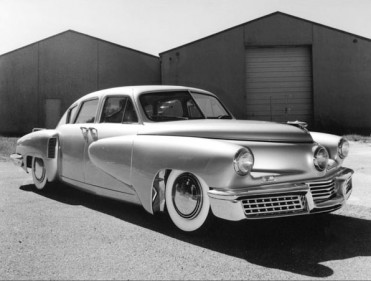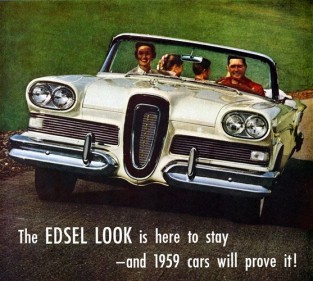Central Planning

I was going to compare the Lustron Enamel-baked steel houses of 1948 to Solyndra this morning. Or maybe the Chevy Volt. All of them come from the miracle of central planning, which is how a command economy works, or doesn’t, as the case may be. Central Planning takes policy and applies it to consumer demand.
The Lustron houses were part of the same continuing delusion of central planners. I don’t mean to be cruel. It seemed like a good idea at the time, like the wind farms that are not attached to the power grid, or the solar cells that won’t work in Michigan or the Northeastern U to do much except get your water tepid. In the case of the Lustron all-steel home, there was a perfect storm, just like Climate Change that is driving all sorts of amazing decisions. The wonks in Washington decided that it was time for something new.
It sounded so good. Lustron houses were built in former war-production plants with existing tooling, trained workers, and plenty of excess capacity. The low maintenance, extremely durable, baked-on porcelain enamel finish was expected to attract modern families who might not have the time or interest in repairing and painting conventional wood and plaster houses. It was perfect- some outside funding was required, of course, and the Government kicked in $12.2 million. Doesn’t sound like much in these sadly inflated times, but in constant dollars starts to look a lot like the Solyndra subsidy.
I checked constant dollars, and between 1948 and 2008 (the year of the great bust, and the hidden 15% inflation that has snuck up in commodities the FTC doesn’t include in the core rate like gas and food- go figure!) but the figure today would be well north of $120 million, and that was in times when the Government was a little more stingy in crony-capitalism.
Anyway, the Lustron Corporation did exactly the same thing as Solyndra: they shut up shop in 1950, and that was the end of it.
The comparison with the Volt is not a surprising one, and it goes the same way. Despite being an extremely well funded, well-publicized, government-supported enterprise that was generating a desperately needed product, people did not want it.
It is interesting that another maverick is tied up in this. Preston Tucker and his futuristic motor car competed with the government for allocation of the surplus Dodge Chicago Aircraft Engine Plant. Ticker may have been torpedoed by the Big Three (or the movie about him would have you believe that) but I think the failure of the Tucker and the later Edsel were that the consumer thought they looked funny.

I suspect that is exactly what people thought about the Lustron homes and the jury is currently out on the Chevy Volt. The consumer did not want them.
A pal out West sent me the latest sales figures for the Chevy Volt, another of the much-touted Answers to Everything. Well, everything except the tricky bit about where the electricity is supposed to come from to charge them up. We seem to be shutting down coal-fired plants and not replacing them with anything except wind turbines that don’t quite work, and solar panels that are built in China, and don’t give you a damn thing at night or under clouds.
Government-owned Generous Motors sold 1139 Volts in November, up from 1108 in October. More significantly, GM finally admitted they won’t meet their sales targets of 10,000 Volts sold in 2011, itself well below the White House central planning target of 15,000 to be sold this year.
Now, I am no telling you that the Volt is a bust. It is a commendable idea that is about as ready for prime-time as the Chevy Vega I owned back in the gas crunch of 1973- but there it is. People don’t want to drive around in ticking bombs. Remember the Pinto?
There are many additional factors about the failure of central planning and command economies. The Lustron dream was brought low by other parts of the behemoth of government. IN Columbus, Ohio, for example, the metal dwellings could not be built due to local zoning against dwellings with steel chimneys.
And like the Volt, the government was the consumer of last resort. The largest single concentration of Lustron homes was at the Marine base at Quantico. Sixty of the Westchester Deluxe Models were constructed there, and they came in un-Marine pastel colors like “Surf Blue,” “Maize Yellow,” and “Flamingo Pink,” the last of which was reportedly really unpopular among some Jarhead families.
The houses- like electric cars- do have a strong point. They lasted until 2006. The Marines declared the future of 1948 was “too small for most families,”and the homes were available to anyone who would disassemble them and take them away. There was only one taker, a collector who had his Westchester Deluxe taken apart and put in storage. I do not know what color it was. I would like a Flamingo Pink one.
Twenty-three units were demolished by bulldozer in 2006 and another thirty-four in 2007. Two were saved, but are not being used for housing- just storage. They are listed on the National Historic Register, which is where we put things that we have not got around to destroying yet.
There just wasn’t time for it in the Central Plan. But we are working on it.
Copyright 2011 Vic Socotra
www.vicsocotra.com

